
The animal kingdom never ceases to fascinate. Over the past many decades, we have lost many animals forever and countless others have been brought to the brink of extinction. Despite that, however, nature keeps gifting us with new animal members frequently. In the last 10 years, researchers have discovered several new species which leads to exciting possibilities on learning more about animal evolution.
Here is a look at 10 newly found animal species.
1. New Species of Galapagos Tortoise
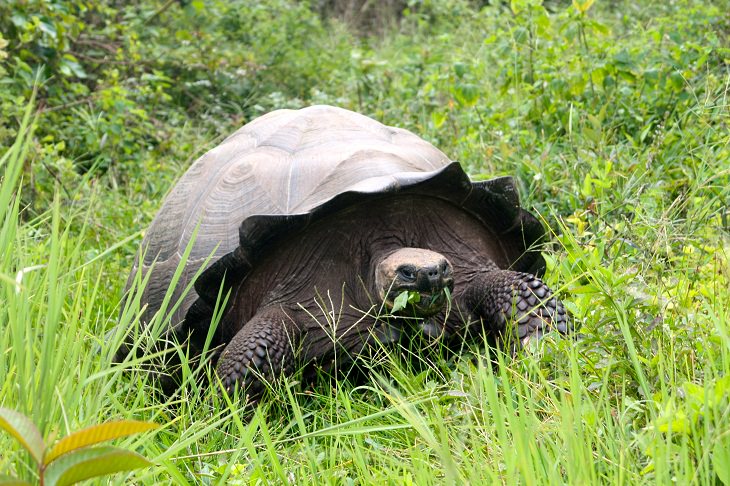
Source: Wikimedia Commons
Scientific name: Chelonoidis donfaustoi
A new species of Galápagos tortoise living on Santa Cruz Island within the Galápagos was discovered in 2015. For years, it was believed that the island had only one species of tortoise - Chelonoidis nigra - known as the Galápagos tortoise. However, a team of researchers found a group of 250 tortoises living on the island that were genetically distinct from the rest of the island’s tortoises. DNA testing finally confirmed that they represent a separate species: Chelonoidis donfaustoi. More than appearances, there is a clear geographical separation between these two tortoise species inhabiting the same island.
The discovery of Chelonoidis donfaustoi opens the door for exciting research and understanding how different it is from Chelonoidis nigra.
2. Fluorescent Polka-Dot Tree Frog
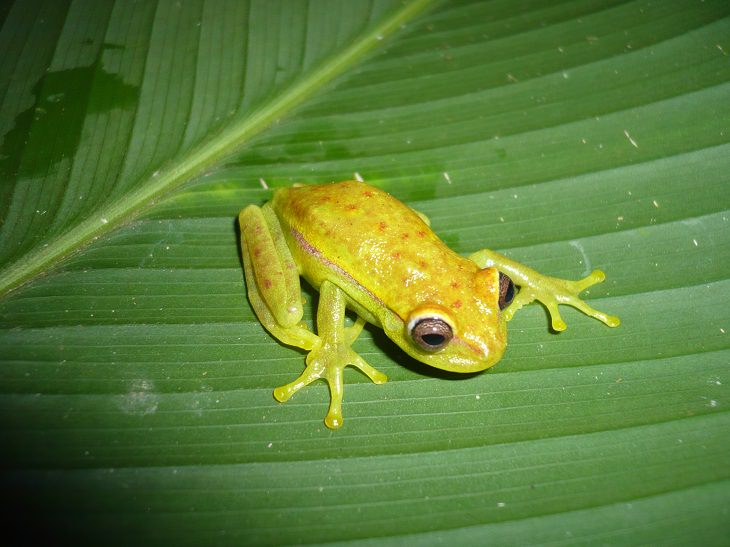
Source: Wikimedia Commons
Scientific name: Hypsiboas punctatus
The world’s first fluorescent frog was discovered near Santa Fe in Argentina in 2017. These amazing amphibians appear like any tree frog in normal sunlight. However, under UV light, they glow bright green, blue or yellow. Interestingly, this animal was discovered by accident while scientists were studying the pigment of polka-dot tree frogs, which are common in South America.
Before the fluorescent polka-dot tree frog was discovered, this kind of fluorescence was only noticed in parrots and scorpions. Researchers are now attempting to determine whether these frogs can see their own fluorescent color.
3. New Species of Orangutan
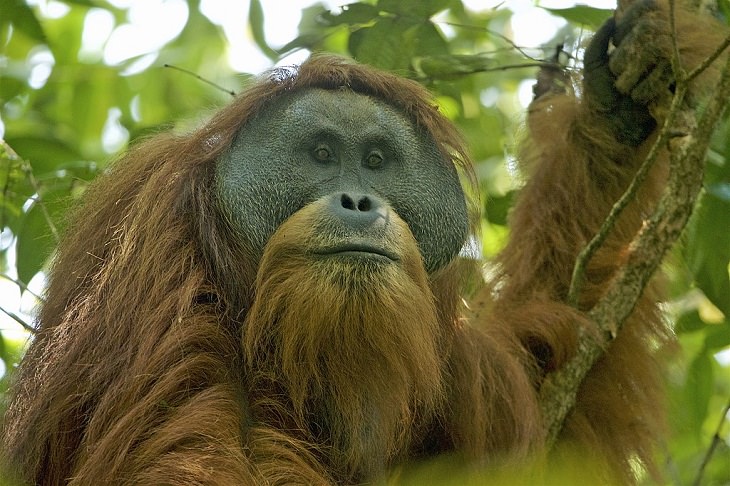
Source: Wikimedia Commons
Scientific name: Pongo tapanuliensis
It was way back in the 1930s when researchers had first claimed that there was an isolated population of orangutans living in the Batan Toru forests in western Sumatra. However, it took decades of comprehensive research, genetic tests and field observations, along with comparison from the male skeleton structures of countless orangutans to confirm the finding of a new species. Finally, in 2017, Pongo tapanuliensis was identified as a different species of orangutans.
There are only about 800 individuals left of these orangutans and they occupy 1100 kilometers (1100000 meters) of forests in North Sumatra. Compared to other orangutans known from Sumatra and Borneo, these animals have smaller heads and a flatter face. Scientists also believe that the Pongo tapanuliensis is closer to their Bornean counterparts.
4. Garuda Wasp
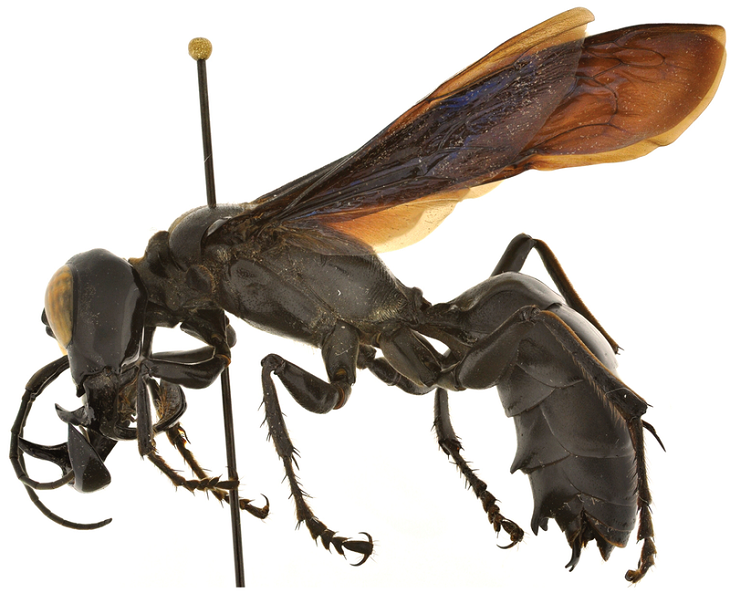
Source: Wikimedia Commons
Scientific name: Megalara garuda
A bizarre-looking and new wasp species was discovered in 2012 on the Indonesian island of Sulawesi. Named Megalara garuda or the ‘Garuda Wasp’, these wasps are 2.5 inches long and are pitch-black in color. The males of the species have long sickle-shaped jaws and scientists aren’t sure about their use. This giant venomous insect was waiting to be discovered and had been kept in storage since the 1930s in Indonesia's Museum Zoologicum Bogoriense. This species belongs to the digger wasp family and can paralyze the prey by stinging it.
The Megalara garuda has been named after the mythical half-man/half-bird creature in Indian mythology called Garuda.
5. Translucent Snail
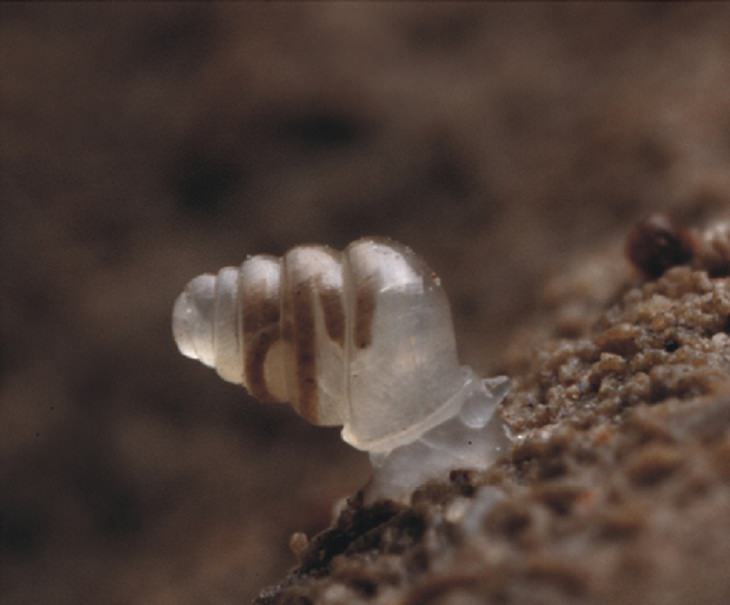
Source: Wikimedia Commons
Scientific name: Zospeum tholussum
In 2013, scientists discovered a new species of an unusual cave-dwelling snail in Lukina Jama–Trojama in Croatia, one of the deepest cave systems in the world. These tiny and fragile snails, classified as Zospeum tholussum, have a beautiful dome-like translucent shell. They are a part of a genus of minute air-breathing land snails that are exclusive cave-dwellers.
Remarkably, only one specimen of this new species of snail was found when it was initially discovered. The snail was resting 980m (3,200 feet) below ground, deep inside the cave system in a little cavity full of rocks and sand with a small stream running through it.
The miniature snail doesn’t have visual orientation as there's no light that far below the earth's surface.
6. Narluga Whale

Source: Wikimedia Commons
Scientific name: Beluga (Delphinapterus leucas) x narwhal (Monodon monoceros) hybrid
A unique whale skull at the Natural History Museum of Denmark had been puzzling scientists for over 30 years. The skull was found in the Arctic and had features of both the beluga and narwhal whales. After years of study, researchers from the University of Copenhagen finally concluded in 2019 that the skull belonged to what was an extraordinary hybrid animal — a cross between a narwhal and a beluga. Both these whales are very common in the Arctic and share quite a few similarities.
The new hybrid species was found after the researchers managed to extract DNA from the skull’s teeth. The analysis showed that the whale’s DNA was 54% beluga and 46% narwhal. The hybrid, named as Narluga, is likely a male. Further study is being conducted to ascertain when and how the hybrid was born and whether there are any members of the species still alive.
(Note: the picture above is that of a beluga whale)
7. Spectacled Flowerpecker
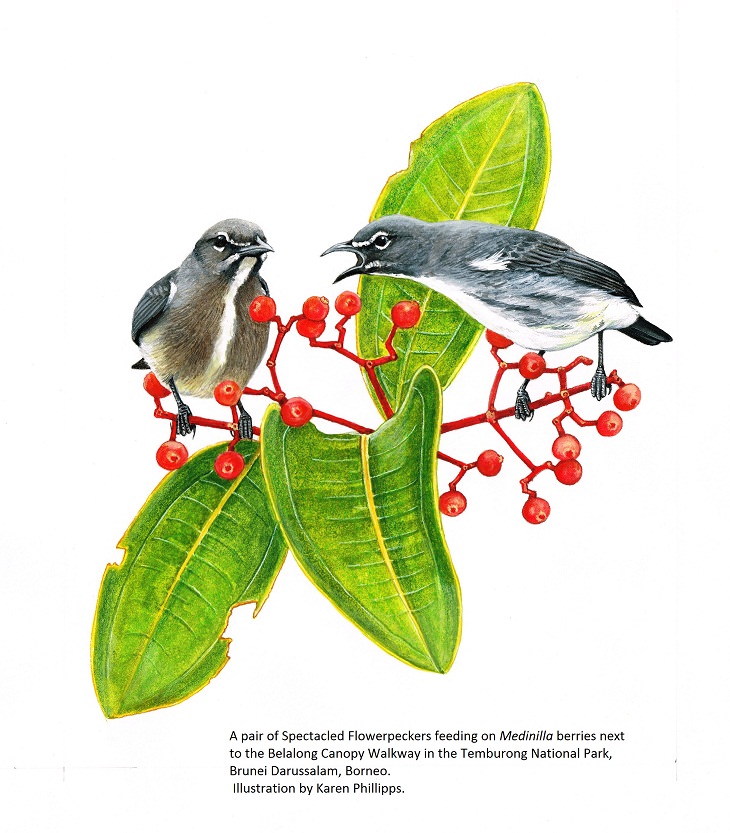
Source: Wikimedia Commons
Scientific name: Dicaeum dayakorum
First spotted in the lowland forests of Borneo, Malaysia, in 2009, the spectacled flowerpecker is a unique bird that eluded description for over a decade. Researchers weren’t certain about it and hence the fruit-loving passerine bird had a sense of wonder and mystery about it.
A decade later, in 2019, scientists were eventually able to identify the unobtrusive little bird as Dicaeum dayakorum or the spectacled flowerpecker. At just two inches in height, drab in color and having only faint white markings around its eyes, this bird is hard to spot. The species belongs to Dicaeidae, which is a family of fruit-eating passerine birds found in tropical southern Asia and Australia. The spectacled flowerpecker is not closely related to any of the other flowerpecker species.
8. Olinguito
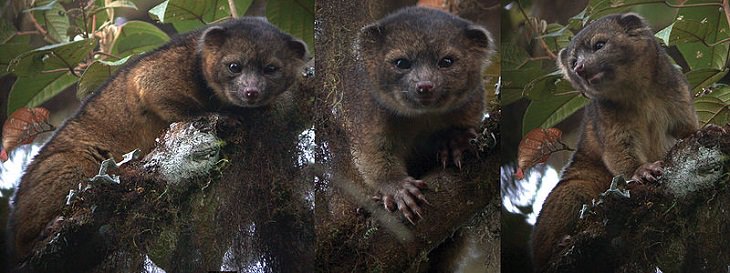
Source: Wikimedia Commons
Scientific name: Bassaricyon neblina
The first mammal carnivore species to be discovered in America in 35 years, the olinguito is the latest addition to the raccoon family tree. This new species of mammal, called Bassaricyon neblina, was discovered in 2013 by the Smithsonian National Museum of Natural History scientists. The small animal has a fluffy red-orange fur along with a bushy tail and is found in the misty Andean Mountains in South America.
Interestingly, scientists had previously assumed olinguitos were members of their sister species, the olingos (Bassaricyon gabbii) - another tree-dwelling mammal that lives in the same mountains. They are, however, larger and have longer faces than olinguitos. This mammal was identified after gathering DNA sequences from live specimens. In appearance, these remarkably beautiful little animals look like a cross between a house cat and a teddy bear.
9. Chikilidae
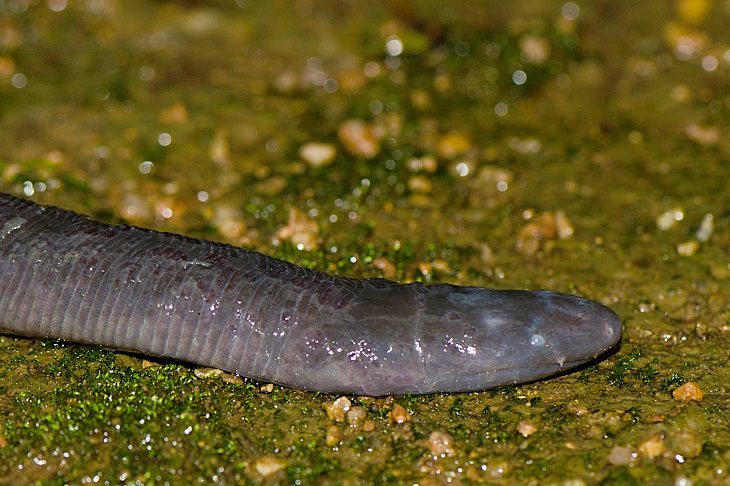
Source: Wikimedia Commons
Scientific name: Chikila fulleri
An entirely new family of limbless amphibians was discovered in northeastern India in 2012. Part of the caecilian order of amphibians, these creatures look more like earthworms than frogs or toads because of the inexistence of limbs in their bodies. These amphibians, christened Chikilidae, build underground nests and can grow to be more than a meter (3.2 foot) in length.
DNA analysis of the specimens found that their closest relatives are the Herpelidae in Africa, from which they deflected about 140 million years ago. The discovery of the Chikilidae is a great step in understanding amphibian evolution.
10. Mouse Deer
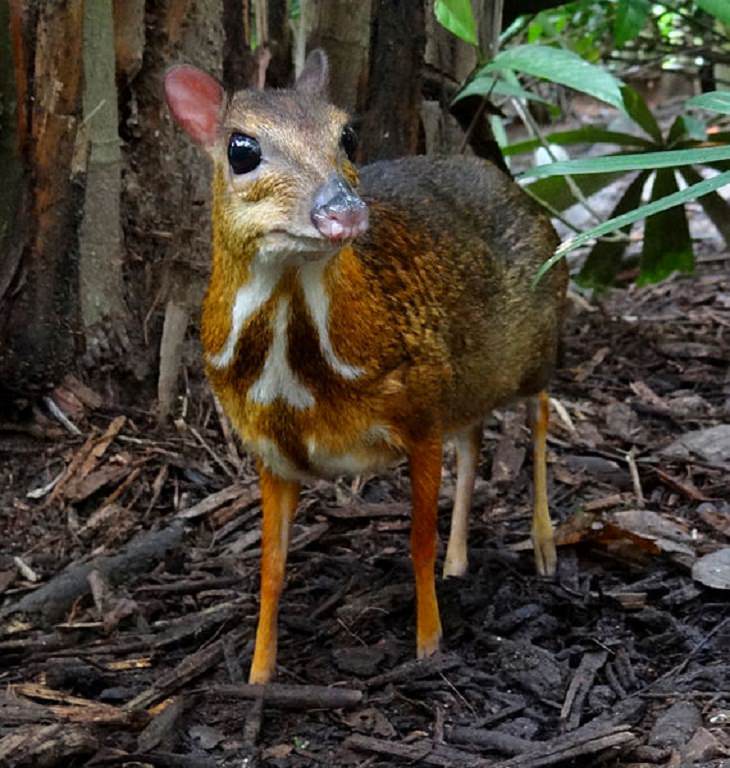
Source: Wikimedia Commons
Scientific name: Tragulidae
Technically, this is not a new discovery, as these animals were considered extinct for close to 30 years. The last sighting of the chevrotain, or the mouse deer, was in 1990 in Vietnam. Researchers believed them to be extinct for three decades until a small group of these little animals was spotted in a Vietnam forest again in 2019. The rare silver-backed chevrotains, that resemble a hybrid of a large mouse and a deer, were captured on film scouring for food in a forest by camera traps. The mouse deer is almost the size of a rabbit and is the smallest of the ungulates (hoofed mammals).
The last chevrotain that was spotted in 1990 was found dead. The species was already on the brink of extinction then, and thus, finding an entire group of these animals so many years later is an important step. With the ‘rediscovery’ of this precious animal, researchers can learn new things about it and figure out ways to not lose it again.
Here is to hoping that we learn from the mistakes of the past and find a way to preserve these new animal species in the coming decade.
Related Articles:
8 Exotic Plants You Won’t Believe Exist